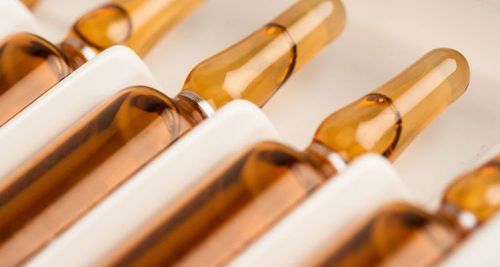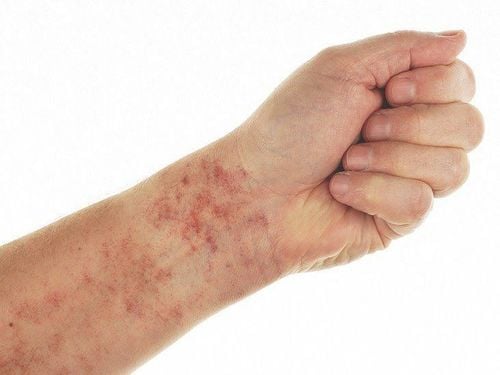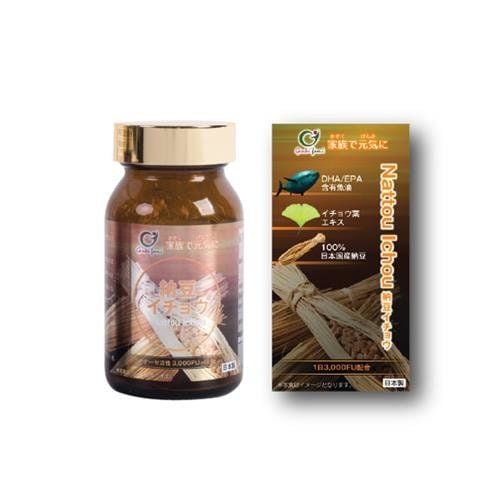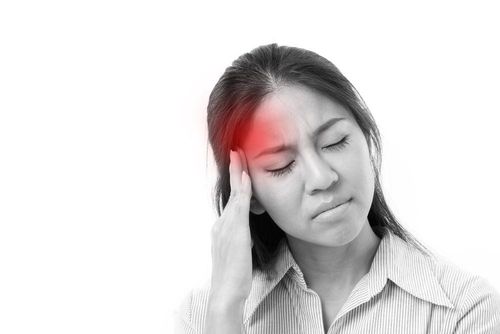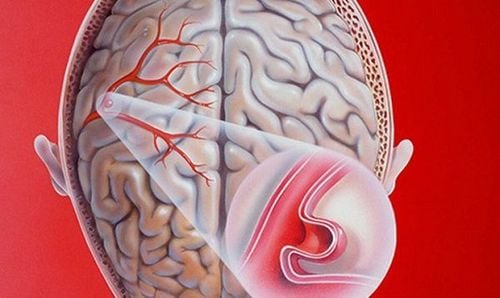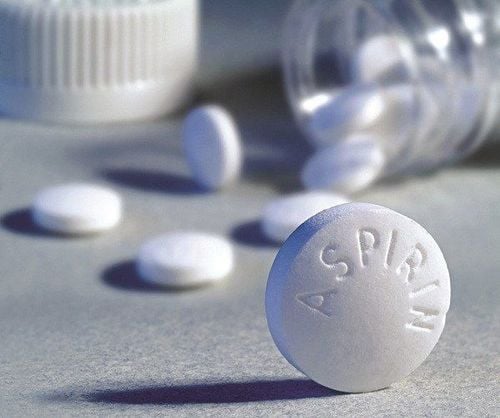This is an automatically translated article.
The article is professionally consulted by Master, Doctor Huynh An Thien - Neurologist - Department of Medical Examination & Internal Medicine - Vinmec Danang International General Hospital.A stroke is a brain attack that occurs when there is an impact that blocks the blood supply to part of the brain or when a blood vessel in the brain bursts. A stroke can cause brain damage, disability, long-term sequelae, and even death.
1. Types of stroke
Strokes are also known as brain attacks and occur in one of two main ways:A blood clot blocks blood flow to the brain. This is characteristic of ischemia. A blood vessel bursts or leaks blood in the brain. This is characteristic of a cerebral hemorrhage. In the above two ways, brain cells can live for a few minutes without oxygen. The type of stroke affects the treatment and recovery of the patient. The three main types of stroke are:
Ischemic. Brain hemorrhage. Transient ischemic stroke (mini-stroke). What all of the above types of strokes have in common is the loss of blood to part of the body's brain. That causes many serious health problems.

2. Ischemic stroke
2.1. Types of ischemic strokes There are two main types of ischemic strokes:Thrombotic strokes: They are caused by a blood clot that forms in an artery that supplies blood to your brain. Embolic strokes: They occur when a blood clot forms somewhere else in the body and travels through, blocking a blood vessel to the brain. 2.2. Cause Most strokes (80%-90%) are ischemic strokes. An ischemic stroke occurs when blood flow through an artery that supplies oxygen-rich blood to the brain is blocked. Blood clots often cause blockages that lead to ischemic strokes.
Some blood clots form inside blood vessels and stay, blocking blood flow in the brain. Cardiologists call this cerebral thrombosis. The causes are usually high blood cholesterol and narrowed or hardened arteries. This causes atherosclerosis and slows the flow of blood, blood can clot to form clots and blocked arteries.
A stroke can also occur if a blood clot forms in another part of the body, usually in the heart or upper chest or neck and travels through the body's bloodstream until it blocks blood flow to the brain. of body. This is a condition called “cerebral vascular occlusion”.
In addition, some other causes can increase the chance of an ischemic stroke such as:
Atrial fibrillation Heart attack Problems with heart valves Injuries to blood vessels in the neck Coagulation problems 2.3. People at high risk for ischemic stroke People at high risk for ischemic stroke are those who:
Over 60 years old Have high blood pressure, heart disease, high cholesterol or diabetes Yes Irregular heartbeat Smoke Having a family history of stroke 2.4. Ischemic stroke symptoms The symptoms of an ischemic stroke depend on which part of the brain is affected. Symptoms include:
Sudden numbness or weakness of an arm or leg, often on one side of the body Confusion Difficulty speaking or understanding others Dizziness, loss of balance or coordination, difficulty walking Loss of vision or blurred vision.
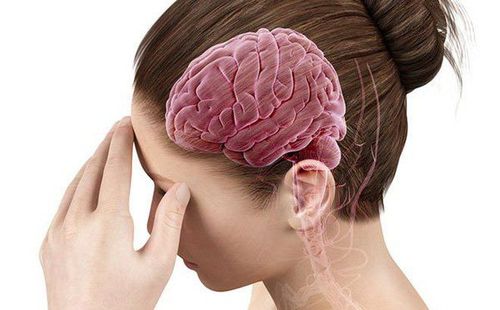
3. Hemorrhagic stroke in the brain
3.1. Causes A brain hemorrhage occurs when an artery in the brain leaks blood or bursts. Leaking blood puts a lot of pressure on brain cells causing damage to the brain.High blood pressure and aneurysms that can stretch and rupture are examples of conditions that can cause a hemorrhagic stroke. The most common causes of brain hemorrhage are:
High blood pressure Injuries Bleeding disorders Cocaine use Abnormal blood vessels Aneurysms (a weak area in a blood vessel that bursts) 3.2. Types of Ischemic Brain Hemorrhagic Stroke There are two types of hemorrhagic stroke:
Intracerebral hemorrhage: The most common type of hemorrhagic stroke. This condition occurs when an artery in the brain bursts, flooding the surrounding tissue with blood. Subarachnoid hemorrhage: A less common type of hemorrhagic stroke. It is bleeding in the area between the brain and the thin tissue that covers the brain. 3.3 Symptoms of Hemorrhagic Stroke Symptoms of a hemorrhagic stroke usually develop over minutes or hours, although subarachnoid hemorrhage can appear suddenly. Some possible symptoms:
Severe headache Confusion Nausea or vomiting Sensitivity to light Vision problems Vomiting 3.4. People at high risk of having a hemorrhagic stroke The following people are at high risk for a brain hemorrhage:
Over 65 years old Have high blood cholesterol, high blood pressure or uncontrolled diabetes Disease obesity Have a stroke in the past Have a family history of stroke Smoking Smoking Eating unhealthy foods Not exercising A stroke from a brain hemorrhage can cause a number of complications such as:
Seizures Problems Memory and thinking problems Cardiovascular problems Eating problems Permanent neurological defects
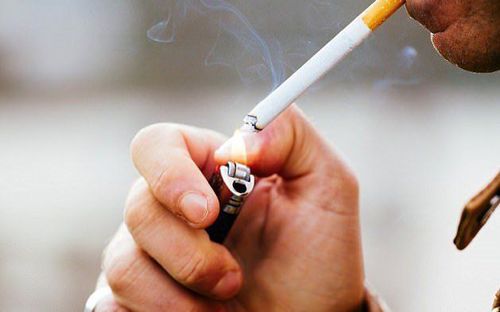
4. Transient ischemia (mini-stroke)
A transient ischemic attack is sometimes called a mini-stroke. They are different from the main types of strokes, because blood flow to the brain is only blocked for a short time, usually no more than 5 minutes.It is important to know that:
Transient ischemia is a warning sign of a future stroke. Transient ischemia is a medical emergency, much like a major stroke. Stroke and transient ischemic attack should be examined and screened for neurological and brain diseases. Accordingly, you need to go to medical facilities immediately if you feel signs of a stroke. Because there's no way to tell in the first place whether the symptoms are from transient ischemic attack or from a major type of stroke.
Like ischemic stroke, blood clots often cause transient ischemic attack. More than a third of people have transient ischemic attack and do not receive treatment for a stroke within 1 year. Up to 10% to 15% of people will have a major stroke within 3 months of transient ischemic attack. Recognizing and treating transient ischemic attack is important for controlling the risk of major stroke.
Stroke is a medical emergency, because without oxygen and nutrients from the blood supply to brain cells and the affected part of the brain, the brain will gradually die and leave dangerous complications. Therefore, when there are signs of brain stroke, relatives need to take the patient to medical centers. Early treatment can prevent serious complications or death.
Currently, Magnetic Resonance Imaging - MRI/MRA is considered a "golden" tool for brain stroke screening. MRI is used to check the condition of most organs in the body, especially valuable in detailed imaging of the brain or spinal nerves. Due to the good resolution and contrast, MRI images allow to detect abnormalities hidden behind bone layers that are difficult to detect with other imaging methods. MRI can give more accurate results than X-ray techniques (except DSA angiography) in diagnosing brain diseases, cardiovascular diseases, strokes,... Moreover, the process MRI scans do not cause the side effects seen in X-rays or computed tomography (CT).
Vinmec International General Hospital currently owns a 3.0 Tesla MRI System, which is equipped with state-of-the-art equipment by GE Healthcare (USA) with high image quality, allowing a comprehensive assessment, without omitting the injury without leaving any damage. and reduce shooting time. Silent technology helps to reduce noise, create comfort and reduce stress for the client during the shooting process, resulting in better image quality and shorter imaging time. With the state-of-the-art MRI system With the application of modern methods of cerebral vascular intervention, a team of experienced and well-trained neurologists and imaging specialists, Vinmec is a prestigious address for stroke risk screening and screening. reliable goods.
In the past time; Vinmec has successfully treated many cases of stroke in a timely manner, leaving no sequelae: saving the life of a patient suffering from 2 consecutive strokes; Responding to foreign female tourists to escape the "death door" of a stroke ;...
Please dial HOTLINE for more information or register for an appointment HERE. Download MyVinmec app to make appointments faster and to manage your bookings easily.
References: cdc.gov, webmd.com,




